Bumper plates and iron plates are now in every commercial gym. But when building your home gym, choosing where to spend your money to maximize your equipment value takes deep research. How do bumper and iron plates differ?
The main difference between bumper plates and iron plates is the material, size, and intended use. Bumper plates are made from rubber or urethane, larger in diameter, thicker, and meant for dropping. Iron plates are made from cast iron or steel, smaller, thinner, and shouldn’t be dropped.
So, how do you know if you should purchase bumper or iron plates?
Table of Contents
What Are Bumper Plates?
Bumper plates are a type of weight plate designed for use in Olympic weightlifting and CrossFit. However, they are also used for general strength training.
Their construction material distinguishes them from traditional iron or steel plates – a dense rubber or urethane coating.
This unique feature allows bumper plates to be dropped from overhead, a common practice in exercises like the clean & jerk and snatch, without damaging the floor or the plates.
Here are the common materials bumper plates are made from:
Virgin Rubber
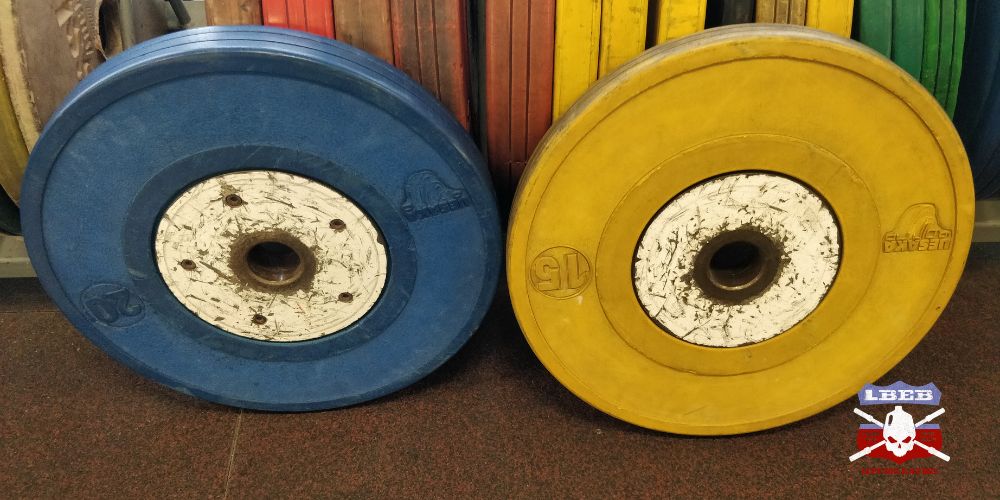
Virgin rubber bumper plates are manufactured from new, unused rubber. This type of rubber hasn’t undergone any previous processes or transformations. As a result, bumper plates made from virgin rubber tend to exhibit superior qualities compared to their recycled counterparts.
They are typically more durable, resistant to wear and tear, and can withstand repeated drops without deforming or splitting. Virgin rubber plates have less of a rubbery smell compared to recycled ones.
Recycled Rubber
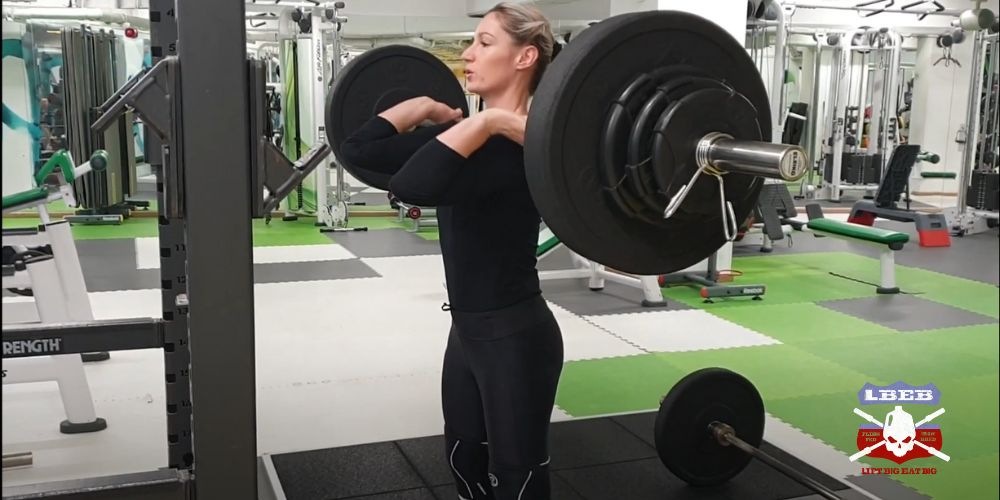
Recycled rubber bumper plates are made from reused rubber materials. These could include old tires, rubber mats, or scraps from other manufacturing processes. They tend to have a higher bounce than virgin rubber ones because they are softer.
While still durable, recycled rubber plates might not offer the same level of wear resistance as virgin rubber plates. They often have a stronger smell, especially when stored in the heat.
Urethane
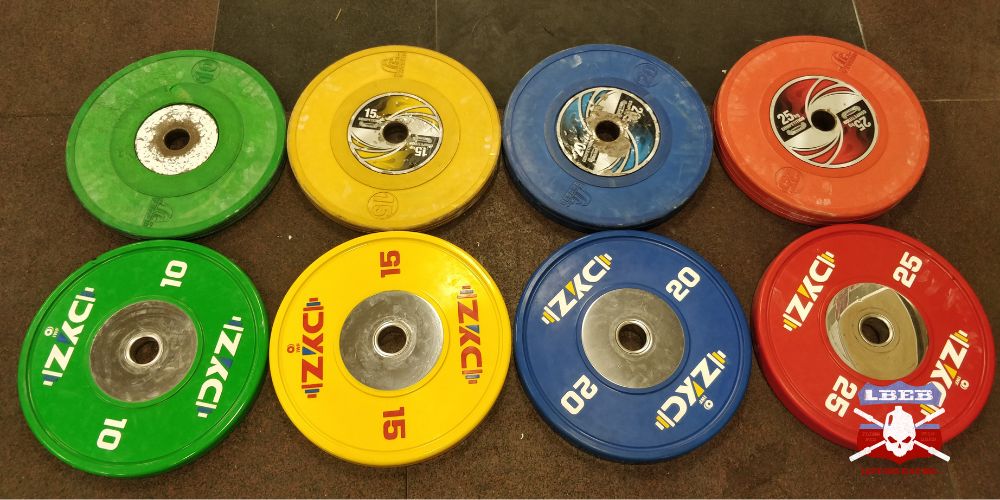
Urethane bumper plates are an upscale alternative to traditional rubber ones. Made from polyurethane, a type of high-grade polymer, these plates are valued for their exceptional durability. They are denser than their rubber counterparts, which leads to a lower bounce when dropped.
They are less likely to scuff, chip, or peel and are also resistant to moisture and sweat, which can be especially beneficial in humid climates or high-intensity training environments.
You can find my complete list of best bumper plates here.
What Are Iron Plates?
Iron plates, also known as cast iron or steel plates, are a type of weight plate used in various fitness regimes, from strength training to bodybuilding. They are manufactured by pouring molten iron or steel into molds corresponding to different weight categories.
Iron plates can be broadly categorized into two main types: standard plates and Olympic plates.
Standard Plates

These are smaller and lighter, with a hole diameter usually around 1 inch. They’re commonly used for adjustable dumbbells and smaller standard-sized barbells.
Olympic Plates

These are larger, heavier, and designed with a 2-inch hole to fit Olympic barbells and dumbbells.
The standard color for iron plates is black or dark grey, as they are often coated with a layer of paint or enamel to prevent rusting. However, some versions can be chrome-plated or possess a hammer-tone finish for a more aesthetically pleasing look.
They are not made to be dropped like bumper plates are.
Bumper Plates vs. Iron Plates Key Differences
Thickness
Iron plates are significantly thinner than bumper plates allowing you to fit much more weight on a barbell. Standard iron plates have the following thickness by weight:
- 1.25 lb = 0.4”
- 2.5 lb = 0.5”
- 5 lb = 0.6”
- 10 lb = 0.9”
- 25 lb = 1.4”
- 35 lb = 1.3”
- 45 lb = 1.3”
Eleiko makes the thinnest bumper plates and has the following dimensions for their IWF Training Plates:
- 25 lb = 1.38”
- 35 lb = 1.53”
- 45 lb = 1.97”
- 55 lb = 2.28”
But depending on the type of bumper plate, they can go as thick as:
- 25 lb plate = 2.25”
- 35 lb plate = 3.12”
- 45 lb plate = 3.75”
Diameter
Bumper plates are all made to the standard 450 mm in diameter, with some budget models being slightly shorter by a few millimeters or not as well calibrated, giving more variation. This is regardless of the weight.
Iron plates are made to different dimensions depending on the weight. 45 lb plates are slightly smaller than bumper plates at 445 mm. Here is the diameter of other iron plates:
- 1.25 lb = 127 mm (5.0”)
- 2.5 lb = 160 mm (6.3”)
- 5 lb = 197 mm (7.75”)
- 10 lb = 226 mm (8.9”)
- 25 lb = 277 mm (10.9”)
- 35 lb = 355 mm (14.0”)
- 45 lb = 445 mm (17.5”)
Center Hole
The Center hole diameter is the same between a bumper plate and Olympic iron plate at approximately 50 mm (2″). This is to snugly fit an Olympic barbell. Standard iron plates have a 1″ or 25 mm center hole to fit standard barbells.
Intended Use
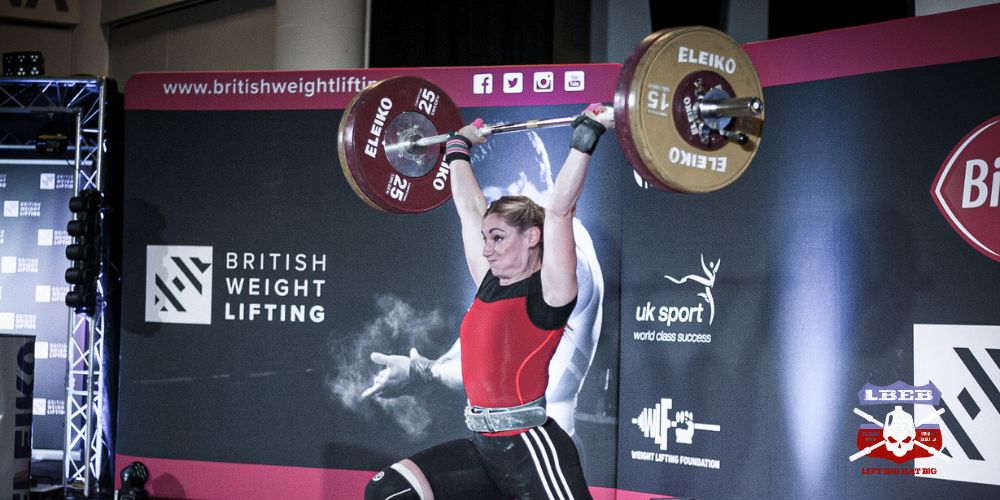
Bumper plates were specifically designed to be dropped without damaging the plates, barbell, or platform. Therefore, bumper plates are intended to be used by Olympic Weightlifters and CrossFitters who are regularly performing the Olympic lifts.
However, they can also be used for general strength training, meaning you don’t need to double up on bumper plates and iron plates.
Other strength athletes like Powerlifters, Strongmen, and physique competitors use iron plates.
Material
Iron plates are made from cast iron or steel. Sometimes, they’ll be coated in rubber. Bumper plates are made from virgin or recycled rubber or urethane.
Durability
The durability of iron and bumper plates depends on the plate brand and materials used. Iron plates typically last decades when used appropriately. That is not dropping them from hip height and above. Iron plates eventually crack with poor use.
Bumper plates also last decades when treated well and are made of high-quality rubber. Typically, virgin rubber with steel-plated hubs as the center ring last the longest, as evidenced by the 10-year warranty top companies give for their plates.
When bumper plates are made from crumbed recycled rubber like hi-temp bumpers, they may only last a few years with regular use and multiple drops.
Loading
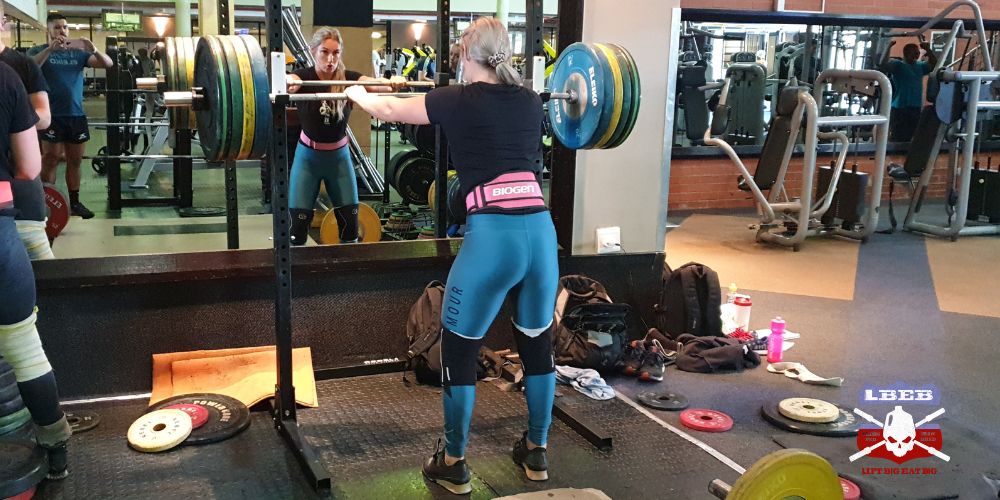
You can load the most weight on a barbell with iron plates. You’re limited to 160 – 290 kg on a men’s bar with bumper plates. You can load in excess of 500 kg with iron plates, depending on the plates used.
Noise
The rattle of iron plates as you violently lockout a squat is a sound only meatheads enjoy. It’s the sound of heavy weights moving with speed. Further, they tend to be loud when deadlifting. But bumper plates have similar loud noise when dropping them from overhead.
But noise varies based on the rubber of the platform and the bumper plate material. Soft hi-temp bumper plates make the least noise, and urethane bumpers make the most.
Price
Iron plates are much cheaper than most bumper plates. For example, taking a pair of 45 lb plates from Rogue Fitness is $1.68/lb. However, bumper plates range from $1.78 to $8.08/lb for premium bumper plates.
Are Iron Plates Heavier Than Bumper Plates?
Iron plates are the same weight as bumper plates. For example, a 45 lb iron plate weighs the same as a 45 lb bumper plate. But it’s an ongoing meme that bumper plates feel lighter when lifting. This could be due to calibration but most likely due to the width of the plates.
If you’re using thick bumper plates, they span more of the barbell sleeve. Having more weight away from the center of the barbell increases the whip, potentially helping with the lift.
Can You Use Bumper Plates With Iron Plates?
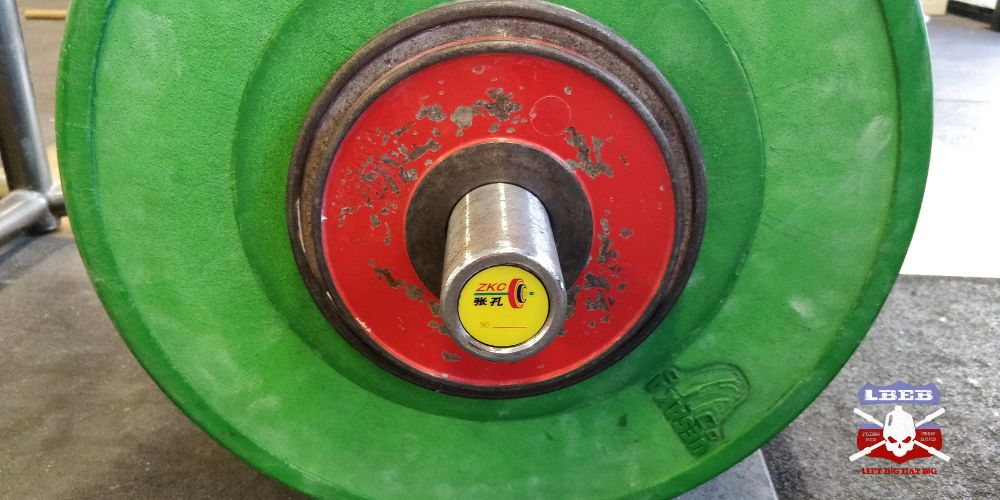
You may see some lifters place a 45 lb bumper plate on the inside and load 45 lb metal plates outside this when deadlifting. If it’s a cheap commercial gym bar and equipment, you probably don’t care. But if it’s your equipment, you don’t want to do this.
It will shorten the life of your barbell and plates, especially since iron plates are slightly smaller than bumper plates, so the one plate takes all the load.
If you’re Olympic lifting, this is a big no-no unless it’s small change plates 5 kg or below.
Should You Get Bumper Plates Or Iron Plates?
Whether you should get bumper plates or iron plates depends entirely on the type of training you’re performing. Bumper plates are essential if you plan to perform Olympic lifts or touch-and-go deadlifts as a Weightlifter or CrossFitter.
If you are performing general strength or physique training mainly using a power rack, iron plates are all you need and will save you cash.
Summary
If you’re dabbling in any exercise where you must drop the weights, you only need bumper plates, as they can be used for all your strength training exercises. Iron plates aren’t as versatile, not allowing you to drop weights without damaging equipment.
